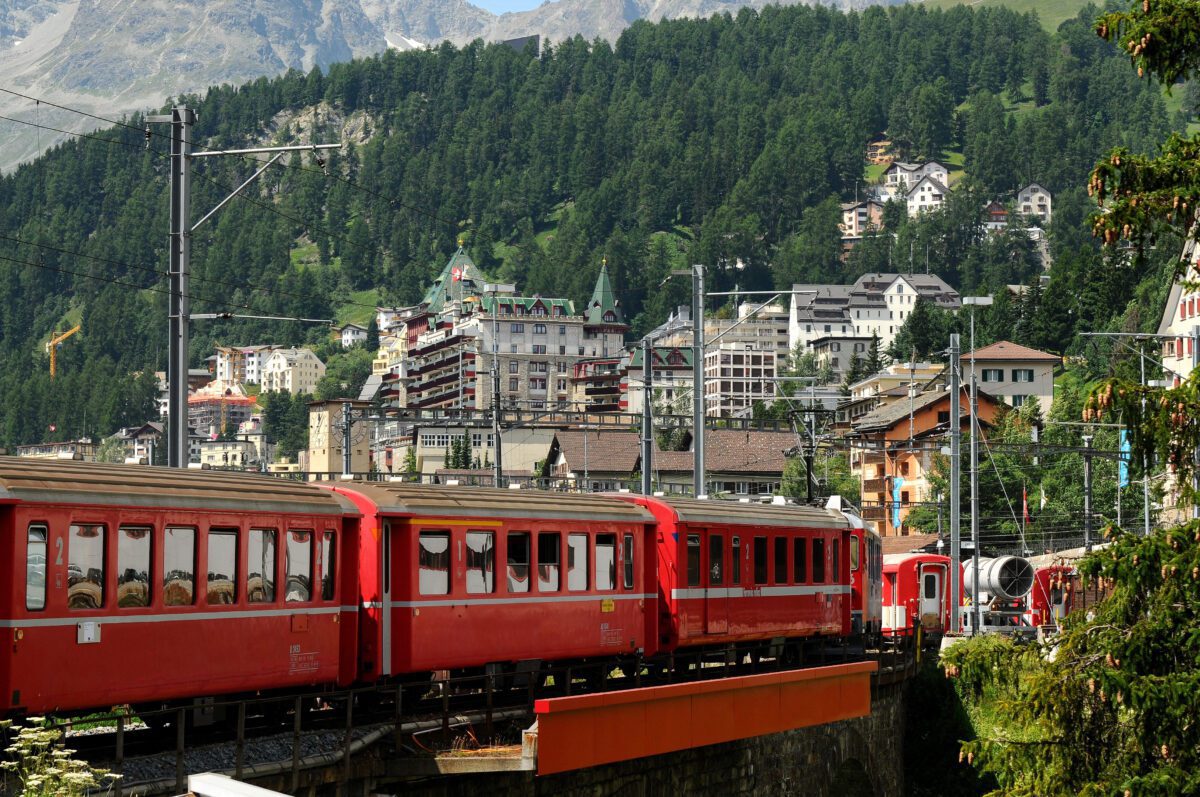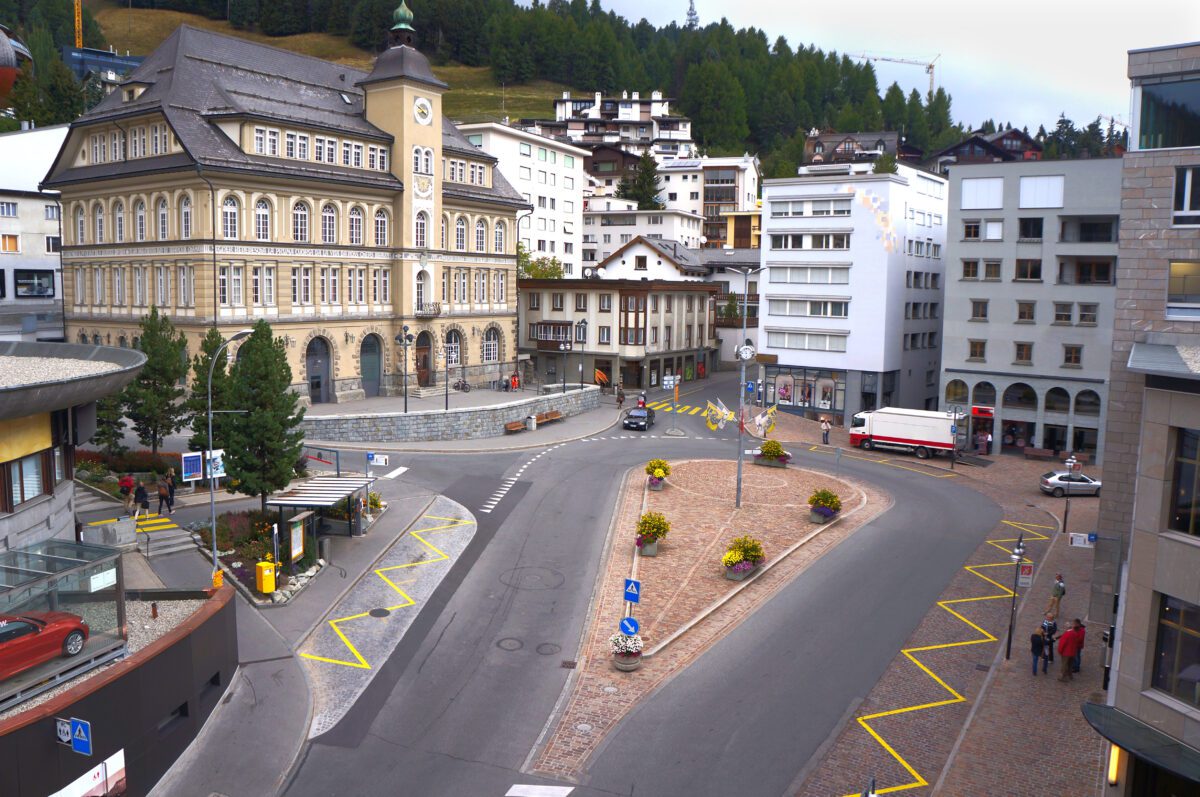The Swiss alpine village that pretty much invented winter tourism is still at it – and still doing it better than anybody else. When it comes to this splash of posh high in the Alps, superlatives reign: St. Moritz is the most storied, most picturesque, sunniest, glitziest, most like a fairytale, the crème-est de la crème.
Lucky explorers first stumbled upon the therapeutic mineral waters at St. Moritz some three thousand years ago, but it wasn’t until 1864 that hotelier Johannes Badrutt dared his summer guests to do something preposterous – come back to St. Moritz that winter for fun and games. Well, they took him up on his bet, had a glorious time in the valley’s winter sun, and the games were on.

Olympic bobsled events were held in 1928 and 1948 and before that, in 1904, the St. Moritz-Celerina Olympic Bobrun was created for British tourists. The run has hosted 24 world championships. If you’re feeling adventurous, grab a friend and climb on board a four-person sled (with a driver and a brakeman) for an exhilarating one-mile run down icy chicanes at speeds surpassing 80 mph.
The red narrow-gauge Glacier Express from Zermatt brings you to St. Moritz in style. It takes eight hours for the train to make the 180-mile journey, but with alpine scenery like this, you’ll be thinking even 22 mph is too fast. Raclette and wine are waiting in the dining car.
When it’s time to leave town, consider the handsome red Bernina Express to Tirano, Italy, over the 7,400-foot Bernina Pass. Using innovative methods like spiral (helical) tunnels, the grade has been reduced considerably, but in some places it’s still as much as seven percent, the steepest in the world for electrified trains without cogwheels.

The most photographed of the Bernina railway line’s 196 bridges is the Landwasser Viaduct built in 1902, a gently curving limestone bridge featuring six tall, graceful arches. For its technical and architectural achievements, the route from Thusis, Switzerland, to Tirano has been named a UNESCO Heritage Site.
Lake St. Moritz is a natural draw. It’s great fun in the summer to circumambulate the snow-fed lake and watch the sailboats, paddleboards and canoes. The three-mile saunter will set you up nicely for dinner. Beyond the lake, summertime diversions include golf (four courses in the area), indoor ice skating, hiking, mountain biking, tennis, horseback riding and fishing the Inn River, whose waters ultimately join the Danube.

Winter brings a bit more variety: skiing (Nordic and alpine, naturally), ice hockey, ice skating, polo on ice, horseracing on ice, greyhound racing on ice, even cricket on ice. The mountains cradling St. Moritz offer more than 200 miles of ski runs. But to be fair, the gondolas, ski lifts and funiculars stay just as busy in the summer as they do in the winter.
Shopping in St. Moritz is, as you might guess, both exclusive and expensive. All the big designer names are on hand along with shops selling watches, jewelry and things like gnarled folkloric woodcarvings of natives in Swiss costumes.

The resort community is old-school, dominated by large grande dame hotels. Remember Johannes Badrutt? His namesake is the city’s crown jewel, Badrutt’s Palace Hotel, opened by his son on Lake St. Moritz in 1896 and where Alfred Hitchcock liked to winter. Indoor/outdoor infinity pool, first-rate spa, numerous bars and gourmet restaurants.
Also consider Suvretta House, an elegant Belle Époque ski-in and ski-out hotel with shopping boutiques and wellness center. And a third choice: the legendary Kulm Hotel in the heart of St. Moritz, a splendid property Johannes Badrutt opened in 1856 that comes complete with its own nine-hole golf course. But be forewarned: the word Kulm comes from the Latin for “hill.”






















